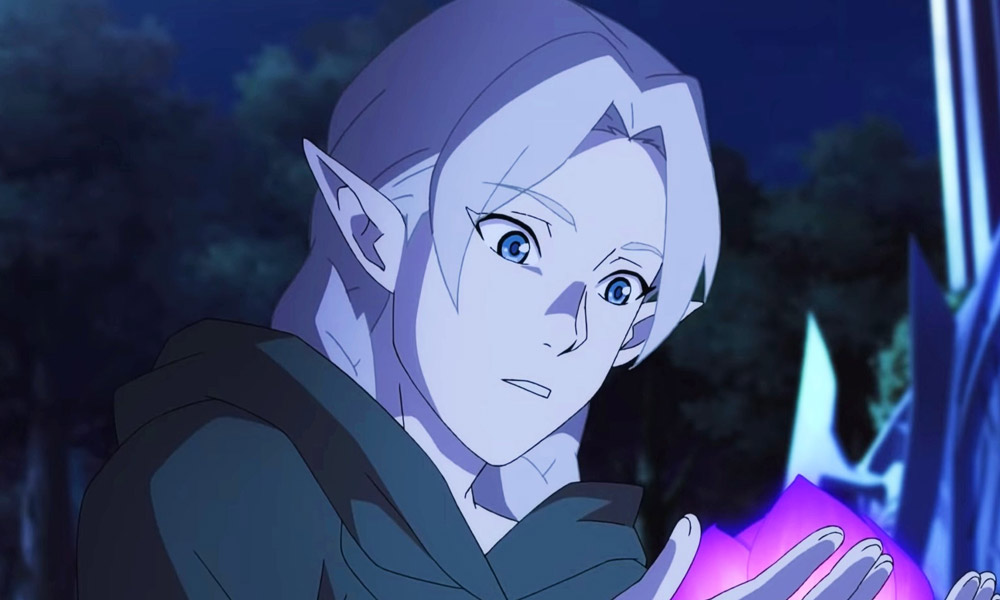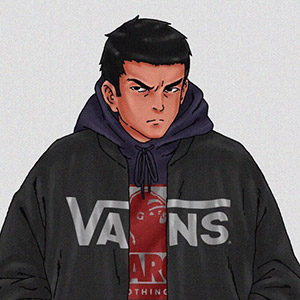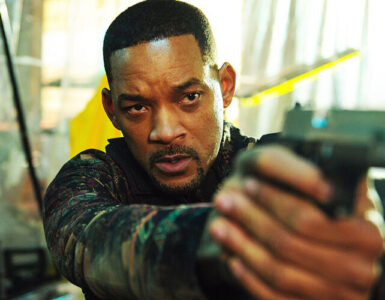Ranked as the number one eSports tournament with a prize pool of over $35 million, DOTA 2 is a multiplayer online battle arena (MOBA) recognized worldwide with its massive fan base. It is considered one of the most iconic games to have evolved over the years from a mod into a full-fledged game. With such a huge success, it came to a point where fans wondered why DOTA 2 never ventured into the world of animation nor cinematics despite its potential and similarities? That dream eventually turned real when Netflix and Valve announced their collaboration; DOTA: Dragon’s Blood.
It was a rather perplexing moment when Netflix and Valve dropped the teasers of DOTA: Dragon’s Blood because it honestly came out of nowhere. Still, it was a good kind of surprise, like the kind when you needed True Sight and your support swung by last minute and used the Dust of Appearance so you can get that Killing Spree.
Produced by Ashley Miller, best known for his works on Fringe, Andromeda, Thor and X-Men: First Class, it would be fair to say we were all nervous since this is his first-ever work on a game or an animated adaptation of one. Prior to the teasers, there wasn’t any news or build-up towards the release. The show was basically one month away from its announcement and that’s unusual. But the truth is, the show never really needed the promotion anyway because fans had long rallied behind the announcements in support of their favourite game’s first-ever venture into the animation screen. It is considered long-awaited news and as DOTA fans, we will see through the skittish kickoff no matter what.
DOTA: Dragon’s Blood is surprisingly an enjoyable animation that explores the lore and relationships between notable characters of the game and sets up a world that viewers can immerse themselves in whether they’re fans or not. The series, however, will leave you with multiple questions throughout its journey that we hope will be answered in future seasons.
DOTA: Dragon’s Blood follows Davion, renowned as the Dragon Knight and his journey to find out his real identity. In his adventure, he meets exiled Princess Mirana, whom we recognize as Princess of The Moon (POTM). If you’re fans of the game, these two characters can’t be missed. The animation revolves around the two of them and explores their personal struggles which eventually intertwines into something much bigger than they thought it was. Before the announcement, nobody probably even realized that these two characters knew each other.
The series is a wonderful platform that explores the story and world behind DOTA for a change. DOTA itself is a comprehensive game that consists of 120 heroes, each having their own personality and unique backstories that are hardly ever told with the exception of a character biography under their profiles. It was only in 2011 when Valve started to release comics that tell the tales of different characters during The International or new seasons. Players might have recalled the Archronicus which explored quite a wee bit of history about DOTA during tutorial quests even though it soon was removed after the game released its new Source 2 client in 2015. Beyond that, the stories and lore were pretty much open to the player’s imagination and creativity. But now that has slightly changed and DOTA: Dragon’s Blood brings us a fresh perspective of what Valve and Netflix had in store for us.
DOTA: Dragon’s Blood tastefully unearths the stories and histories of the game that leaves us desirous for more. Ashley Miller knits plots of different characters and slowly builds them into a bigger picture that viewers will see the lead up to the beginning of DOTA. Most of the lore in Dragon’s Blood was kept identical to the game even though there was not much, to begin with. They did though stick to the roots with the biography of Davion and Mirana, but the question players would ask after is if the show is actually canon to the game?
The pacing of the show is pretty neat. It starts off slow at first and picks up right before the halfway mark and introduces many new and familiar characters into the fray. But before it does that, it sets up the main characters and their backstory staunchly before they begin throwing in new ones. As you can pick up from their trailer, heroes such as Invoker and Luna will make appearances in the animation. Make no mistakes that they have enough story and screen time to safely say that they are not there purely for fan service. They have much to play in this story that will ultimately unfold and leave fans asking questions and wanting for more.
However, this eventually leads up to several different plots developing all at the same time throughout the series. In hindsight, these stories could’ve been even better laid out with just one or two more episodes. The only major problem is that at the end of the series, there are questions left unanswered and we can only pray to Selemene that they won’t be ignored.
The visual backstory of the show takes a peek into the world of DOTA and what it’s like before the game happened. Fans will be able to catch glimpses of different races, towns, and see this special corner of the DOTA universe that they will never ever get to see anywhere else.
The quality of the animation itself deserves praise too. Studio Mir, the studio behind animations such as The Legend of Korra and Voltron: Legendary Defender earns merit here. The world presented in the show is beautiful and one can tell how much effort they have put in to follow the game’s style while adding their personal flair. To gather the game in detail and visualize them onto the screens in a congruent way isn’t easy.
If you think the animation is child’s play because of the game’s demographic, you’d be in for a surprise. In contrast with its quirky and light-hearted humour that you can find in between banters of Mirana and Davion, the animation took a risk with its R-rated rating. Yes, in case you didn’t know, Dragon’s Blood is not suitable for children under the age of 17. It was a startle as much of the game’s target audience are children and we were flabbergasted when we first hand experienced the violence of the animation. It wasn’t what we expected, but it was astounding, glorifying… and bloody, very bloody.
As a big fan of the game, you might find yourself squealing over cameos and easter eggs that are pulled straight from the game, whether it’s characters or items. What these cameos or easter eggs are, so we will leave the discovery to you. No spoilers here!
The story and the script are complemented by the compelling voice lines of every character, especially the Dragon Knight and the Princess. Davion himself is voiced by Yuri Lowenthal, prominent for his roles as Sasuke Uchiha in Naruto and Peter Parker/Spider-Man in Insomniac’s Spider-Man game and Mirana is voiced by Lara Pulver, who has many TV series’ roles under her belt. How the story explores their relationship can be genuinely felt by Yuri and Lara’s chemistry.
Troy Baker who voices Invoker in the show also manages to bring out the sagaciousness of the intelligent character in a resolute manner. Troy himself has voice acted in many animations and games such as Metal Gear Solid, Bleach, Fullmetal Alchemist: Brotherhood and even One Piece.
How the animation employs music plays a big role in this storytelling. Scored by Dino Meneghin, the music behind DOTA: Dragon’s Blood has an overall intensive yet enigmatic vibe which is pretty much spot-on for the fable. Every track seems to know its way around the show and comes on only at the right time. Although there won’t be any familiar tunes, how the soundtrack sets the mood for the show plays out well with its pacing and it’s hard to find any fault with it.
In its entirety, the first eight episodes are wrapped in mysteries and refreshing narratives of your favourite characters. In-game, you are only ever able to see them (mostly) one-dimensionally. Now that these characters and stories have come alive, the feeling is surreal as it gives you the temperament and tolerance to ease past any blemishes the show has.
This seems like it’s too good to be true but for the first season, DOTA: Dragon’s Blood is pretty good and there’s no doubt the desire for more. For fans, you might be thoroughly impressed by how the series managed to satisfy your passions to dive into the depths of DOTA’s universe without even playing the game. Adaptations usually have big shoes to fill and DOTA: Dragon’s Blood thankfully manages to do well in most aspects, whether its visuals, story or sound. Even though it still has a slightly overwhelming number of plots, it’s something that can be settled in the future seasons and as fans, we should give it a benefit of the doubt especially when credit is due.
GEEK REVIEW SCORE
Summary
The first season of DOTA: Dragon’s Blood is an exceptional game adaptation that will leave you hanging for more after its season finale. And as fans, we can only pray they’d continue in the right direction and explain the unanswered mysteries of the first season. Feels just like when you’re in-game praying for your ally Mirana’s Sacred Arrow to hit; a little anxious, hopeful and excited all at the same time.
Overall
9/10
-
Story - 9/10
9/10
-
Direction - 8/10
8/10
-
Characterisation - 9/10
9/10
-
Geek Satisfaction - 10/10
10/10




















